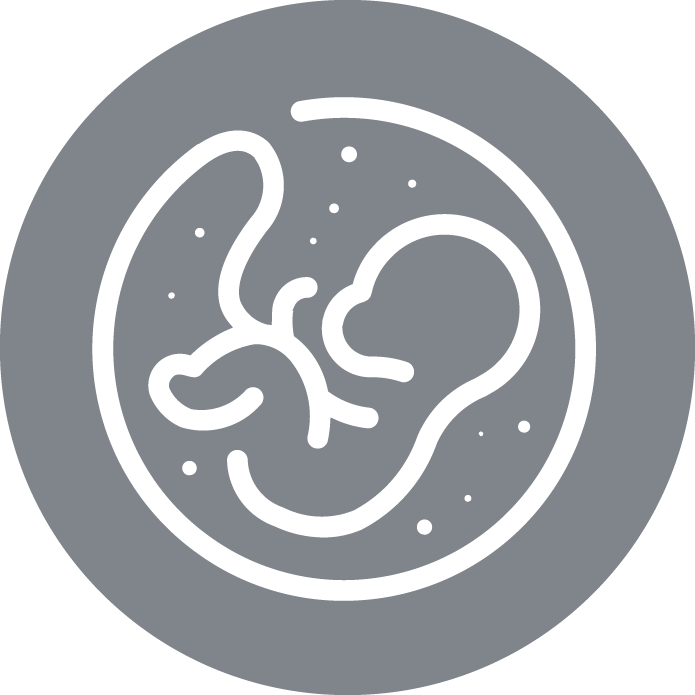Online course in Fertilization, Embryo Development and Techniques to Obtain In Vivo Produced Embryos
MODALITY: Online
CENTER: IVIRMA Global Education
20 theoretical
IVIRMA Campus
330 €
This course is accredited by the European Accreditation Council for Continuing Medical Education (EACCME). Once the course is completed, the student will be awarded with 20 ECMEC´S credits
Intended for
Andrologists, Embryologists, Specialists in Reproductive Medicine, Gynaecologists, Doctors, Residents of Gynaecology and Obstetrics
Description
This course presents the biological foundations necessary to obtain an in vivo gestation.
In the first section, we will consider different female physiological barriers that the sperm has to overcome from deposition to fertilization site, including different oocyte envelopes, as well as the oocyte response induced by the fertilizing sperm that results in the generation of two pronuclear structures (one maternal and another paternal) as indicators of correct fertilization. In this sense, we will talk about uniparental inheritances resulting from fertilization (mitochondria and centrioles) as well as about the natural mechanisms of self-correction in cases of abnormal fertilization.
In a second section, we will review the development of the preimplantation embryo from fertilization to blastocyst stage. Embryo development is presented from a classical and molecular descriptive perspective, focusing on several milestones in embryo development, such as the maternal-to-zygotic transition, sperm remodeling mechanisms, cell differentiation, and genome imprinting (autosomes and sex chromosomes).
Important information:
The online course will be carried out through the e-learning platform: IVIRMA Campus. The student will receive a message with the access information and credentials 24/48 hours before the start of the course.
IVIRMA Campus can be accessed from Windows computers (7, 8 or 10) or Mac, using Chrome or Firefox in its last three versions. Access from mobile devices is not supported and does not ensure the correct operation of the course.
To successfully complete the training and obtain the corresponding certificate, the student must obtain a percentage greater than or equal to 70% of correct answers in the final evaluation. To do this, you will have two opportunities to take the exam.
Skills
Learning outcomes expected to be acquired by the student at the end of the course:
1. Distinguish the main stages and modifications that mature gametes undergo from their ovulation or deposition to their meeting.
2. Identify the interaction mechanisms between gametes and the post-interaction alterations that they experience to achieve a successful fertilization.
3. Propose correction mechanisms in case of abnormal fertilization.
4. Analyse the different events that occur during embryonic development, which includes preimplantation morphological and biological stages as well as the adequacy of each stage and its nutritional requirements.
Program
1. GAMETE TRANSPORT
2. GAMETE MATURATION: “Molecular mechanisms”
3. FERTILIZATION: Fertilization in the human species
4. GAMETE INMUNOLOGY
5. FERTILIZATION: The role of the glycocalyx in fertilization and membrane fusion
6. FERTILIZATION: Oocyte molecular changes in response to fertilizing sperm
7. FERTILIZATION: Genomics of fertilization and recombination processes
8. FERTILIZATION: Uniparental Inheritance I: the centriole
9. FERTILIZATION: Uniparental Inheritance I: mitochondria
10. FERTILIZATION: Anomalies in fertilization. Mononuclear and triplonuclear embryos
11. FERTILIZATION: Fertilization correction mechanisms
12. PRIEMPLANTATION EMBRYO DEVELOPMENT
13. Blastomeric fate and polarization
14. Differentiation of cell lineages I
15. Differentiation of cell lineages II
16. Gastrulation
17. Transcriptomics of preimplantation embryo development I
18. Transcriptomics of preimplantation embryo development II
19. Morphological and functional embryology within the first three weeks of gestation
Program
Session
1. Gamete transport
2. Gamete maturation
3. Fertilization
4. Introduction to in vitro fertilization techniques
5. Embryo development
6. Main landmarks in the preimplantation embryo development



